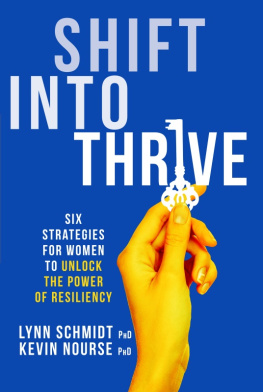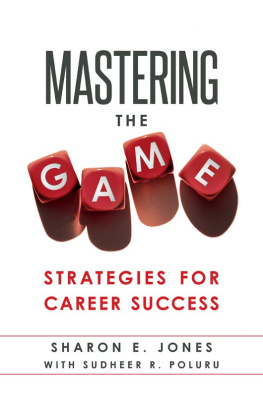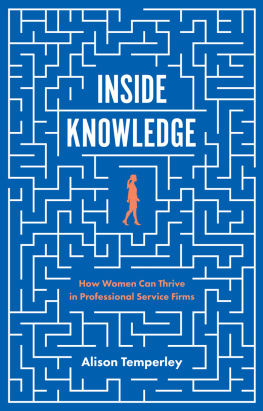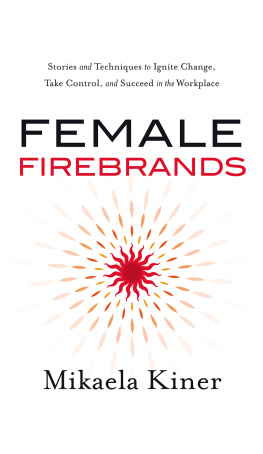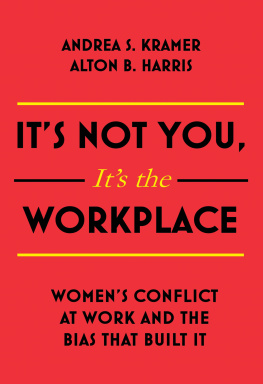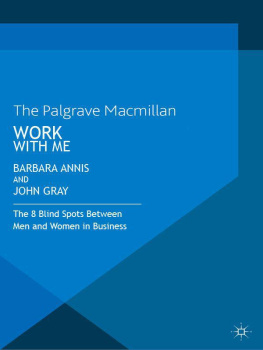Contents
Guide
I Wish Id Known This
6 Career-Accelerating Secrets for Women Leaders
BRENDA WENSIL AND KATHRYN HEATH

I Wish Id Known This
Copyright 2022 by Bravanti, LLC
All rights reserved. No part of this publication may be reproduced, distributed, or transmitted in any form or by any means, including photocopying, recording, or other electronic or mechanical methods, without the prior written permission of the publisher, except in the case of brief quotations embodied in critical reviews and certain other noncommercial uses permitted by copyright law. For permission requests, write to the publisher, addressed Attention: Permissions Coordinator, at the address below.

| Berrett-Koehler Publishers, Inc.
1333 Broadway, Suite 1000
Oakland, CA 94612-1921
Tel: (510) 817-2277, Fax: (510) 817-2278
www.bkconnection.com |
Ordering information for print editions
Quantity sales. Special discounts are available on quantity purchases by corporations, associations, and others. For details, contact the Special Sales Department at the Berrett-Koehler address above.
Individual sales. Berrett-Koehler publications are available through most bookstores. They can also be ordered directly from Berrett-Koehler: Tel: (800) 929-2929; Fax: (802) 864-7626; www.bkconnection.com
Orders for college textbook/course adoption use. Please contact Berrett-Koehler: Tel: (800) 929-2929; Fax: (802) 864-7626.
Distributed to the U.S. trade and internationally by Penguin Random House Publisher Services.
Berrett-Koehler and the BK logo are registered trademarks of Berrett-Koehler Publishers, Inc.
First Edition
Paperback print edition ISBN 978-1-5230-0097-5
PDF e-book ISBN 978-1-5230-0098-2
IDPF e-book ISBN 978-1-5230-0099-9
Digital audio ISBN 978-1-5230-0100-2
2022-1
Book production: Seventeenth Street Studios
Cover design: Adrian Morgan
To the generations of amazing women leaders who have, and will, change our world for the better.
CONTENTS
INTRODUCTION
Broom on Fire
We wish this could be a conversation.
Ideally, youd see our faces and wed see yours. We would love to chat in person about the challenges women encounter while managing a career. Wed love to hear your problems and stories and ideas for the future and to share all weve learned. We would love to have that conversation with you.
This book is intended to be the next best thing: two master executive coaches sitting in your passenger seat, guiding you through a few of the typical obstacles of professional life. Our desire is to illuminate the most dangerous career blind spots you face in the workplace, help you sharpen your vision, and show you how to avoid common obstacles so many women encounter. We want to help you reach your finish linethe leadership position you want and a successful, sustainable career.
We know you have many options when it comes to career advice, and to be honest, we werent looking for another book to write. However, our passion for helping women become successful, effective leaders has never been stronger. The need for women leaders has never been more urgent. And its not just us saying that.
In 2021, in the midst of the global COVID pandemic, McKinsey & Company, in partnership with LeanIn.org, released its seventh annual Women in the Workforce report, based on surveys and interviews with 65,000 people who work in 423 companies. This annual report continues to show that women have difficulty moving up the pipeline into higher levels.
We would like to see the infamous glass ceiling disappear altogether. One of the issues that must be addressed in order to make that happen is fixing a phenomenon that the report calls the broken rung. Although women left the workforce in much higher numbers than men during the pandemic, the management gap cannot be attributed to attrition alone.
In Break Your Own Rules, Kathryn and her coauthors Mary Davis Holt and Jill Flynn cited research showing that companies profits and share performance improve when women are well represented in senior leadership.
Those findings are holding steady in many other research studies. Among them is a 2020 McKinsey report using data that encompassed more than 1,000 large companies in fifteen countries. It found that the greater the representation [of women], the higher the likelihood of outperformance. Companies with more than 30 percent women executives were more likely to outperform companies where this percentage ranged from 10 to 30, and in turn, these companies were more likely to outperform those with even fewer women executives, or none at all.
A 2019 McKinsey study showed that women more frequently apply the leadership traits that are highly applicable to our complex global challenges, including inspiration, participatory decision-making, people development, and role modeling.
The research is abundant. Clearly, we cant afford to lose women leaders. More important, its clear that businesses urgently need more women who are ready and able to fill leadership positions. This serves as an additional impetus for writing this book.
THE BURNING BROOM
Our endeavor with this book is the professional equivalent of the heroic actions of a woman named Peggy whose resourcefulness and bravery helped avert a tragedy during World War II. Peggy was among the women all over the nation who supported the war effort by filling jobs in the community where many employers needed workers after men joined the military. Among these women was a small group in a U.S. town who served their country at a regional airport by standing watch in a tower to assist airplane pilots as they took off and landed.
From their perch in the tower, the women had a clear view of the airfield, the landscape along the horizon, and the railroad lines that ran near the airport. Their duties were mostly routine; they were responsible for sending clearance signals and radio messages to crews on the ground.
Peggy was a member of that tower. She and her co-workers could see the landing strip and watch planes ascend and grow smaller until they could no longer be seen from the tower. The women memorized railway schedules and looked out and down to watch trains pull in and out of the nearby rail yards.
One cold night, Peggy was on duty alongside two colleagues. Their routine was shattered when they spotted the flickering lights of a small aircraft making its way toward the landing area. The plane quickly dropped altitude before crashing onto the railroad tracks next to the airfield. Debris from the wreck stretched for a quarter of a mile along the train tracks. Following protocol, Peggy and her team sent out emergency requests for help.
Just a few minutes later, the women in the tower spotted a long train in the distance, unknowingly on a collision course with the demolished plane and its debris. From their vantage point, they could see another disaster about to unfold. Because of a bend in the tracks, the trains conductor would be unable to see the wreckage until it was too late to stop.


